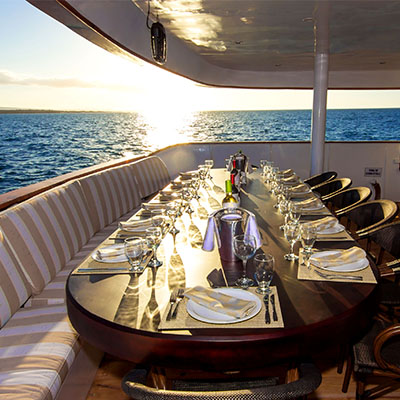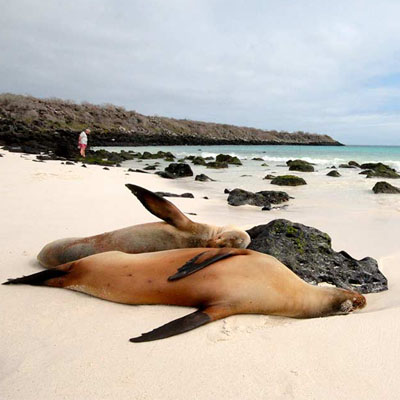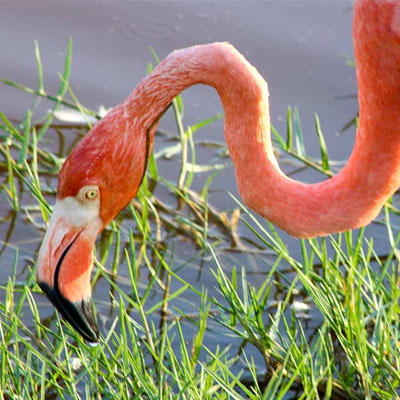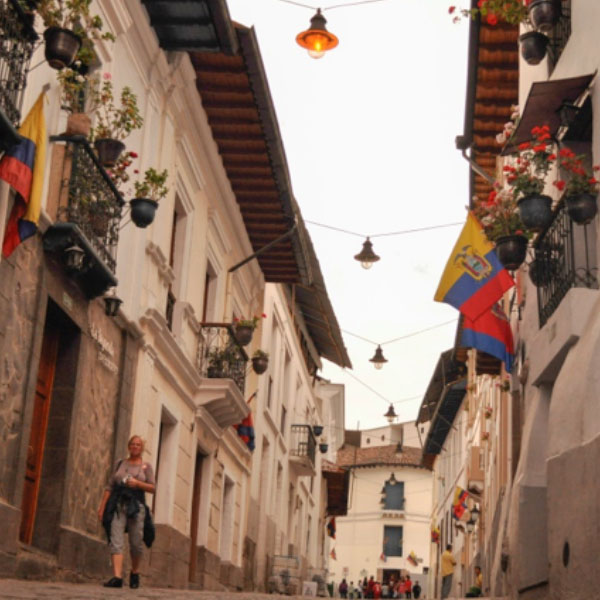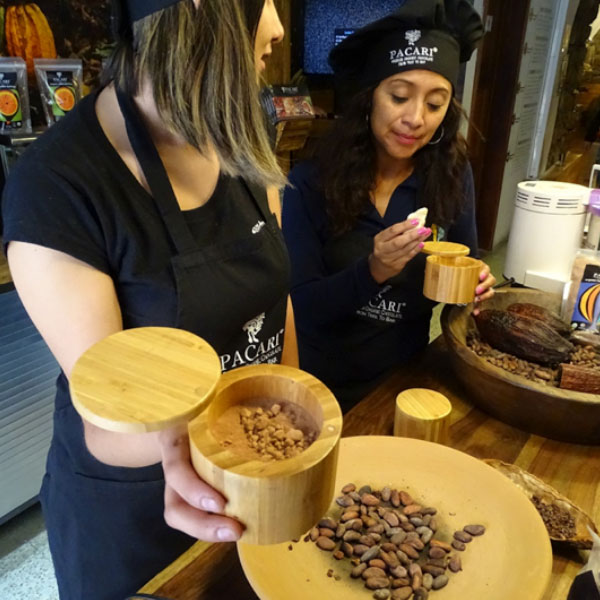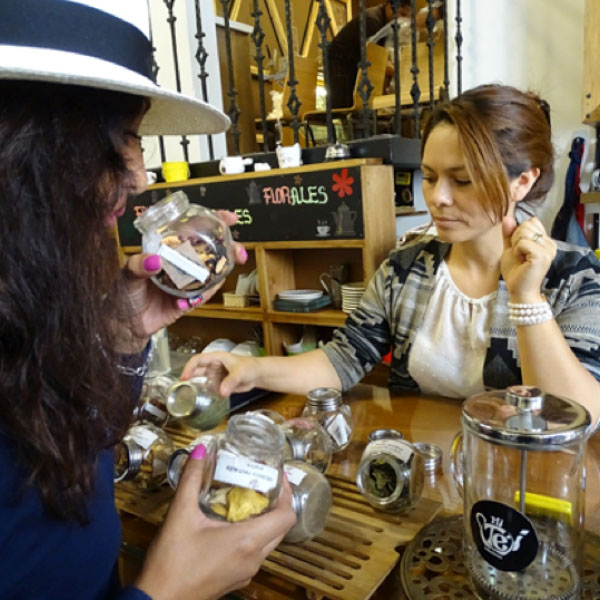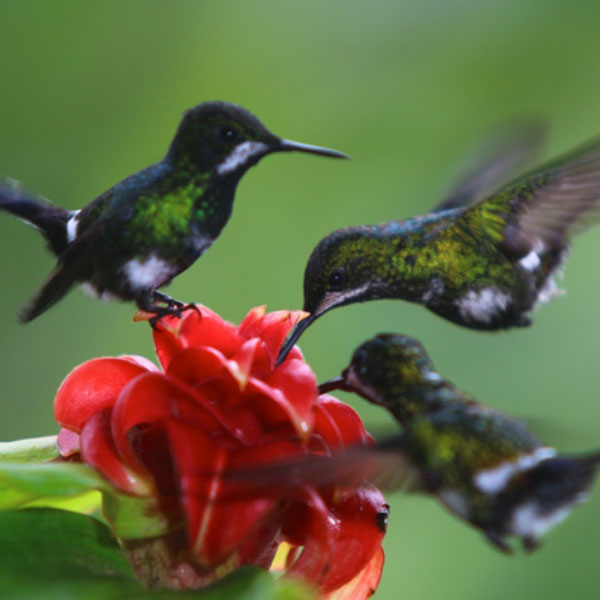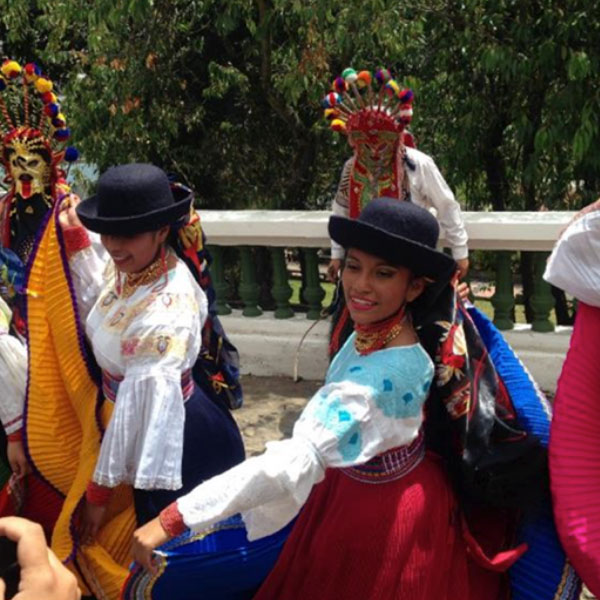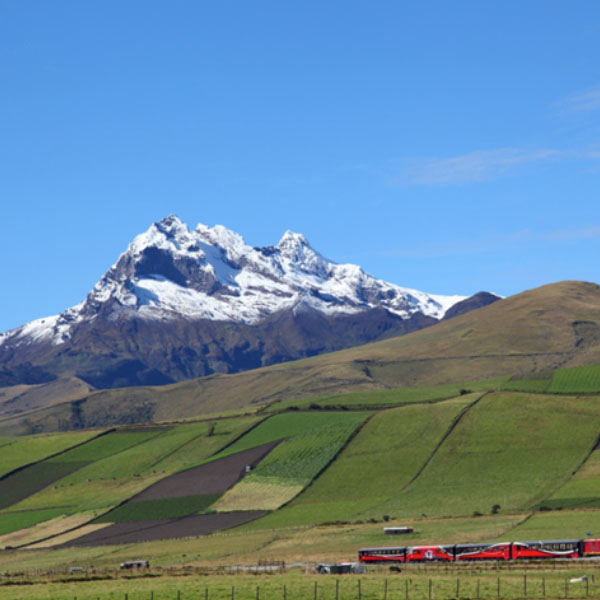GTEG-109 – M/Y GALAPAGOS ODYSSEY CRUISE ITINERARIES
FIVE DAYS / FOUR NIGHTS (ITINERARY “B”) – SUNDAY TO THURSDAY
Detailed Itinerary
DAY 1: SUNDAY – ARRIVAL IN GALAPAGOS ISLANDS
AM: Baltra Airport
Morning flight from Quito or Guayaquil to Baltra Airport. Upon arrival in Baltra Airport in Galapagos from either Quito or Guayaquil, you will be met by your naturalist guide and yacht staff and transferred to the M/Y Galapagos Odyssey.
PM: Dragon Hill (Santa Cruz)
Dragon Hill offers two key-species very likely to be seen during each Galapagos visit – Galapagos land iguanas and American flamingos. You will climb a hill with giant opuntia cacti where these (iguanas)‘dragons’ feed and breed. Up to 1975 this land iguana population in Santa Cruz was threatened by wild dogs. A rescue plan was executed and the iguanas had to be relocated to nearby undisturbed Venice Islets where they successfully reproduced. Although they are quite shy and elusive, you stand a fair chance to see the success of this project with your own eyes.
The short walk crosses the coastal vegetation zone, as well as the somewhat higher arid zone with vulnerable tropical dry forest. In the warm and wet season in the first half of the year all turns green. Evergreen giant prickly pear cacti with internal reservoirs followed a different survival tactic in this dry climate than the leaf dropping Palo Santo trees. This is a very photogenic spot as well, with breath-taking panoramas over the bay and towards an intriguing steep volcanic spout of red lava that overlooks the area. Dragon Hill has become popular because of its saline lagoons behind the beach. They contain algae and shrimp and attract seasonally foraging American flamingos. Dragon Hill is best location on Santa Cruz to observe them.
Meals: Lunch, dinner
DAY 2: MONDAY – GALAPAGOS ISLANDS
Rabida Island & Chinese Hat
AM: Rabida Island
The anchorage-site at the northern headland of Rabida is the only point in its shoreline that is not guarded by a barrier of rocks. The sharp corner of the bay holds a striking red beach that adds color to your photo album. Shortly after sunrise and before sunset colors become more intense and the rusty sand and rocks seem to blaze!
Outside the mating season this remarkable red beach is occupied by a large bachelor colony of Galapagos sea lions that will welcome you. The beach wall on this compact spot holds a small and shallow, green fringed lagoon. Although the water is salty, this pool is the most fertile place on the otherwise very arid islet, so it attracts all kind of aquatic and wading birds such as pintails (or Bahama ducks) and sometimes even American flamingos. In the surrounding mangrove bushes – between the evergreen foliage – many different species of songbirds are looking for hiding and breeding places. Palo Santo trees that drop their leaves in the dry season cover the rest of the island.
Outstanding attraction is the major breeding colony of brown pelicans, and one of the best places in Galapagos to observe them. In the breeding season, their brown plumage turns striking white with chestnut markings on head and necks and a yellowish crown. Brown pelicans are the only pelicans in the world that plunge-dive. From the beach you can see their spectacular hunting V-formations, low above the surface of the sea. It is interesting to compare the dives of the pelicans with the rocket like plunge dives of the boobies.
PM: Chinese Hat
Chinese Hat is a 170 foot high volcanic cone, forming another islet right out of the coast of Santiago. Approaching from the north you certainly will agree with its name. Because the primordial fire has been recently extinguished, you can learn more about volcanism, lava bombs and lava tunnels. On the beach there are also curious pillow-type lavas with coral heads on top! These spheres have a submarine history and were uplifted above sea level.
This tiny, rusty-colored islet just began to sprout. Beautiful beaches of white coral sand arose, and holes in the infertile, but eroding lava fields are getting filled up with lava sand, facilitating inland places for rooting. Galapagos sea lions and countless marine iguanas contribute to fertilization. Everything together creates more favorable options for newcomers, like saltbush, which sticks at the beach and sesuvium that rolls out a discoloring carpet, turning from green into red in the dry season. Across, at the foot of the cliffs a small colony of Galapagos penguins reside and you might see them occasionally during the dinghy-ride.
Meals: Breakfast, lunch, dinner
DAY 3: TUESDAY – GALAPAGOS ISLANDS
Genovesa Island
Darwin Bay & Prince Philip’s Steps
AM: Darwin Bay
Inside the submerged caldera of Genovesa Island lies Darwin Bay. This quiet site is Galapagos in miniature! The small-scaled area will surprise you again and again; walking along a coral sand beach, crossing barren lava formations and creeks, passing tidal pools and shrubs. In this extremely varied and peaceful ambience, every single species has occupied its own ecological niche (or preferred habitat) without disturbing others. Whimbrels and wandering tattlers forage actively along the surf, next to resting Galapagos sea lions. Herons wait motionless at the tidal pools and creeks behind the saltbushes. Impressive frigate birds and red-footed boobies nest in the mangroves and you can also notice vocalists such as the yellow warbler, Darwin’s finches and the Galapagos mockingbird.
Tropicbirds, Nazca boobies, storm petrels, endemic lava- and swallow-tailed gulls among others soar along the cliffs. When you have seen marine iguanas elsewhere, the Genovesa species might not look too impressive, unless one considers, that these are virtually the only reptiles that succeeded to reach and survive on this remote, upstream island, and have become endemic.
PM: Prince Philip’s Steps
Genovesa has a royal touch. And, that’s not only because of its former English name Tower (after the Royal Palace in London). It commemorates the 1964 visit of the Duke of Edinburgh, a Galapagos lover and patron of the Charles Darwin Foundation. In his footsteps (and in those of Prince Charles) you will be able to admire one of Galapagos’ favorite birding spots with largest breeding colonies of Nazca and red-footed boobies.
Before landing you will take a dinghy-ride along the eastern arm of the caldera. On approach, the massive 80 foot high walls become overwhelming, and will offer you a better impression of the dimensions of this crater. Sometimes a Galapagos fur seal is resting on one of the ledges at the base. You will also see seabirds.
Meals: Breakfast, lunch, dinner
DAY 4: WEDNESDAY – GALAPAGOS ISLANDS
Bartolome Island & Sullivan Bay
AM: Bartolome Island
Although small and lifeless at first sight, this young islet offers you some of the best panoramas and wildest landscapes in the entire archipelago. Surprisingly these warm equatorial waters with coral reefs are even one of the best places in the archipelago to encounter endangered Galapagos penguins!
Galapagos’ landmark ‘Pinnacle Rock’ towers prominently over an isthmus with paradisiacal sand beaches and emerald colored bays on each side. Underwater, a second, completely distinctive world opens up to you. The warm, clear and shallow waters are ideal for snorkeling between harmless whitetip reef sharks and Pacific green turtles. If you are lucky you can catch the sight of Galapagos penguins fishing.
To enjoy the postcard view of the idyllic ‘Pinnacle Bay’ you have to cross a third, dramatic type of scenery, climbing the stairs to the viewpoint on top of the island. During this geologically and botanical interesting climb, you will find yourself in the middle of several very close spatter cones, craters, and lightweight lava droplets that where spewed out by spectacular fountains and cooled and solidified in the air. The Summit Trail is ideal to witness how scanty pioneer vegetation such as lava cactus is struggling to cover the lunar-like volcanic landscape of mostly virgin, non-eroded lava fields.
PM: Sullivan Bay
Sullivan Bay is incomparable to any other visitor’s site; the miraculous bas-reliefs you will observe in the crust of the lava flow are unique to Galapagos and Hawaii. Those who are interested in geology and volcanology should not miss the opportunity to witness earth formation in process, although it is unlikely that you will notice real fireworks and lava fountains on spot. Anyway, the power of volcanic activity will impress you forever. Setting foot at the Sullivan lava stream is like landing on the moon.
The desolate, stretched-out fields seem mostly lifeless, but this doesn’t mean that there is nothing to see. To the contrary! And this can best be proofed by its popularity amongst photographers, especially those who have eye for detail and love close-ups. And there is even some life! Pacific green turtles sometimes use the tiny white sand beach to lay their eggs, and eventually you also might spot a strayed heron.
Meals, Breakfast, lunch, dinner
DAY 5: THURSDAY – DEPART GALAPAGOS ISLANDS
Highlands & Baltra Airport
After early breakfast it’s time to leave the yacht and say goodbye. Our dinghy brings you to the harbor of Puerto Ayora, from there we will travel by road to the highlands for our last excursion. In the agricultural zone you can see Galapagos giant tortoises in the wild. Then we will accompany you to Baltra Airport, where you can check-in and return to Guayaquil or Quito or your next destination.
Meals: Breakfast


